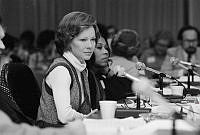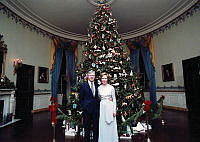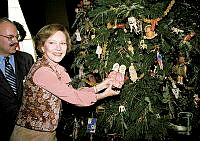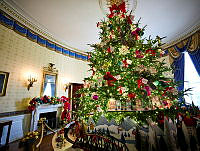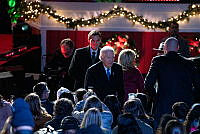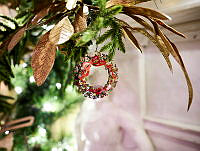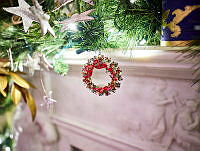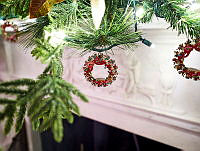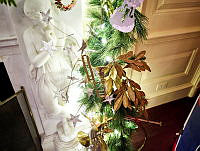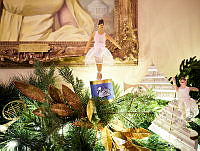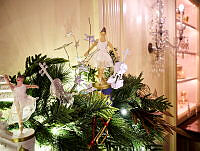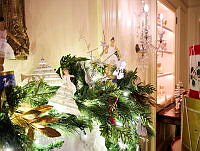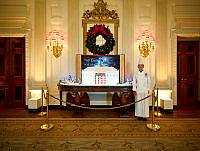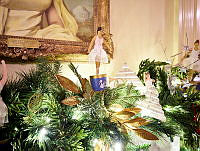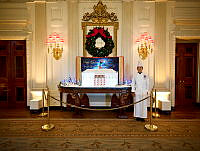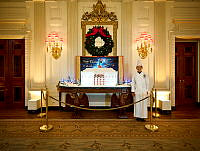Rubenstein Center Scholarship
Harriet Lane
American Princess
“I suppose I may be permitted to suggest that Miss Lane occupies a position in the palatial residence of her eminent relative similar to that which Queen Victoria and the Empress Eugenie occupy at Buckingham Palace and the Tuileries.” – The New York Times, March 20, 1857
Most Americans have never heard of Harriet Lane, but at the time of her uncle James Buchanan’s presidency, she was the White House hostess, a friend to Queen Victoria, namesake to “societies, ships of war, [and] neck-ties,” “First Lady of the Land,” and a national celebrity.1 How, then, have Americans forgotten her?

Harriet Lane c. 1860
Library of CongressBorn to parents Elliott Tole Lane and Jane Ann Buchanan Lane on May 9, 1830 in Mercersburg, Pennsylvania, Harriet Lane lost them both by the young age of eleven. Jane’s brother, Senator James Buchanan of Pennsylvania, became Harriet’s legal guardian after Elliott’s death. As was common at the time, he sent her to boarding school, first in Pennsylvania and later in Virginia and Washington, D.C. Harriet Lane’s privileged upbringing allowed her to become well-versed in academic studies, foreign languages, and music, while also preparing her to become a supportive political wife, doting mother, and well-mannered hostess—important traits of Victorian womanhood. When not at school, Lane lived with Uncle James at his Wheatland estate in Lancaster, Pennsylvania.
Upon Buchanan’s appointment to the position of Secretary of State by President James K. Polk, Harriet transferred to Georgetown Visitation Convent and Preparatory School, studying there from 1847 to 1848. During her time in Washington, D.C., Lane was introduced to the Washington social scene and the many political dinners, balls, and parties that dotted the city. As a young woman, she also made a name for herself in political and diplomatic circles abroad. During the Franklin Pierce administration, Buchanan was appointed to the role of Minister to Great Britain. Lane joined him in London in 1854 and attended diplomatic events, the theater and opera, and dinners with Queen Victoria.2

This 1902 portrait of President James Buchanan was gifted to the White House by Harriet Lane Johnston. She was dedicated to preserving her uncle's legacy throughout her post-White House years.
White House Historical Association/White House CollectionHarriet returned to the United States in the winter of 1855 and found a nation divided by fierce debates over slavery, popular sovereignty, and western expansionism. James Buchanan frequently confided in his niece about his political opinions and aspirations, including his intention to run for president in 1856. Upon returning from London in 1855, Buchanan wrote Lane: “You speak to me concerning the Presidency. You of all other persons know best that even if there were no other cogent reasons, the state of my health is not such as would enable me to undergo the intense anxiety and fatigue incident to wearing that crown of thorns…”3 His personal trepidations did not keep him from running, and Democrats threw their support behind Buchanan, a tested northern politician with southern sympathies. During the 1856 general election, Buchanan courted supporters from his estate Wheatland with Harriet Lane by his side as the “presiding grace of his fair domains.”4 In the three-way election between Buchanan, Republican John C. Frémont, and Know-Nothing candidate and former President Millard Fillmore, Buchanan won.
When James Buchanan moved into the White House in March of 1857, he was in his sixties and had been a lifelong bachelor. Thus, the role of first lady—typically held by the president’s wife—unsurprisingly fell to Lane. She was not the first “surrogate” White House hostess, nor would she be the last. At least twelve women, including Miss Lane, have held this unofficial position since America’s founding, and in some ways, benefitted more from their surrogacy than traditional first ladies.5 According to historian Christopher J. Leahy:
…because [surrogates] had volunteered for the job of hostess, or at least agreed to it willingly, she did not feel trapped in the position as the wife of a president might - left with no choice but to perform the role of hostess. Furthermore, she was not married to the president and thus did not have the added pressure of trying to maintain and sustain a marriage to a man who had many demands placed on his time. Emotionally, she might also be able to detach herself more easily than a wife could from the criticism leveled against the president… Finally, a surrogate’s relative youth could be turned to her advantage. Because she was usually so much younger than the president and his wife, she had the potential to energize the Washington social scene in ways that an older woman could not...6
Indeed, Harriet Lane’s youth and energy were her greatest strength. Over the course of the next four years, she would prove to be one of the most beloved and active first ladies of the nineteenth century.
Lane entered a White House in need of cheer and vitality. Her predecessor, First Lady Jane Pierce, spent her tenure at the Executive Mansion in mourning, having lost her only surviving son two months before President Franklin Pierce’s inauguration. In stark contrast, Harriet Lane was a young, single hostess whose charm and intelligence immediately endeared her to the American people. Within weeks of moving into the Executive Mansion, Harriet Lane was called “the leading star in the social firmament,” praised for contributing “that charm to [Buchanan’s] ‘receptions’ which they would not otherwise possess.”7
As first lady, Lane exhibited her competence as hostess by planning social events, organizing seating charts, and engaging with visitors. According to James Buchanan Henry, nephew of the president and his secretary:
Miss Lane and I attended to the details of these social matters, including dinner and party attending, making visits, etc., for the President. Among the most troublesome of these duties was the proper assigning of precedence to the guests at these so-called state dinners; a delicate task in these Washington entertainments, as any neglect would pretty surely give offence. Miss Lane, from natural aptitude and tact and the experience she had in London whilst her uncle was minister there, managed these details very cleverly.8

This picture depicts the US Marine Cutter Harriet Lane, named in honor of the first lady.
United States Coast GuardBehind the scenes, Lane acted as an extension of her uncle, who deployed his charming niece for political networking and socializing. It is clear that Harriet Lane was highly attuned to the political climate of the United States. For example, in her personal correspondence, she brought up contested topics surrounding slavery, secession, and international affairs.9
The Buchanan administration hosted cheerful balls, levees, and receptions, but violence and secession threatened the Union outside the walls of the White House. As Washington, D.C. became increasingly volatile, Miss Lane’s position as White House hostess became even more critical—and challenging. One contemporary reported that at the 1859 White House receptions: “The people—the dear people— reminded us of so many vultures gathered together; and bound as the President is, to the stake of ‘public life,’ he had no means of evading their beaks and claws...”10 In an attempt to maintain some semblance of control over the Union, President Buchanan, Harriet Lane, and Washington D.C.’s other prominent politicians used joyful social events to create a sense of normalcy in the capital while masking growing anxieties about the direction of the country.
Mounting national tensions aside, Lane was a celebrity among Americans, who consumed news and gossip about the first lady like she was a star of the stage. Representative of fashionable gender norms of the period, Lane was the ideal of Victorian womanhood at the White House. Though not yet a mother or wife, Lane was the caretaker of her uncle, homemaker at the White House and at Wheatland, and a desirable match for eligible bachelors in the Washington, D.C. area. Newspapers, books, poems, and magazines wrote in great detail about her charming personality, her beautiful appearance, and her success as a hostess. One poem, published in popular Frank Leslie’s Weekly magazine flattered: "She meant to see dear Harriet Lane / Who in the White House holds her reign / And charms the old as well as young / By the sweet magic of her tongue."11 A Washingtonian later wrote that “Societies, ships of war, neck-ties were named after her… Such emulated pleasures and honors probably were never heaped upon any other one young woman of the United States."12 Additionally, Lane was keenly aware of her own celebrity status. She signed autographs for charity, christened boats and acquired free samples of the latest fashions of the day.13

This sketch from February 1860 depicts one of Harriet Lane's receptions in the Blue Room of the White House.
White House Historical Association/White House CollectionThe first lady also extended her charisma to foreign visitors. After Japan reopened trade with the United States in the 1850s, a delegation of Japanese envoys visited Washington, D.C. in May 1860.14 Over the course of several days, the president and first lady welcomed the delegation to the White House for receptions, banquets, and a Marine Band concert.15 One member of the delegation, Tommy Onojiro, told a reporter: “I saw the President, he said in a very moderate manner; “splendid gentleman,” and he added, with great accession of excitement, “I saw Miss Lane—Ah!”16 As always, Miss Lane had left a greater impression on guests than the president.
A few months later, the Buchanan administration hosted another distinguished foreign visitor—Albert Edward, Prince of Wales, the son of Harriet Lane’s dear friend Queen Victoria and future King of the United Kingdom of Great Britain and Ireland. His stay at the White House was part of a larger tour of North America. Despite the eleven-year age gap between Harriet Lane and the Prince of Wales, Americans and Brits wildly speculated about the possibility of a romance between their beloved first lady and the heir to the British throne.17 While in Washington, D.C., the Prince of Wales was honored with a White House reception, invited to visit George Washington’s tomb at Mount Vernon, and challenged to a game of tenpins with Miss Lane. Indeed, he wrote Queen Victoria: “I thought Miss Lane a particularly nice person, and very pretty.”18 Their romance never came to fruition, though Harriet Lane was invited to his coronation in 1902.
In 1861, as the United States careened toward a civil war, James Buchanan left office, happy to serve only one term. Harriet Lane hosted her final White House reception on February 16, 1861, and Americans mourned the exit of their beloved first lady. Frank Leslie’s Weekly wrote that “It was a most interesting and touching event. Her unaffected manners and intellectuality have endeared her to all…Miss Lane expressed to her numerous guests her regret at her separation from so many kind friends, and received the warmest wishes for her future welfare.”19

Harriet Lane and James Buchanan sort diplomatic gifts from the Japanese delegation in this wood engraving from 1860.
Library of CongressAfter the White House, Lane became the guardian of her uncle’s legacy, overseeing the creation of a memorial to him in Washington, D.C., as well as the management of his Wheatland estate and the publication of his papers. Lane also traveled the world, collected art, and started a family. She and her husband, Henry Elliot Johnston, welcomed two sons, James Buchanan Johnston and Henry Elliot Johnston Jr., in 1866 and 1870, respectively. Tragically, both children died of rheumatic fever within one year of each other, and her husband succumbed to pneumonia shortly after. Lane channeled her grief into philanthropy, establishing the Harriet Lane Home for Invalid Children (now the Johns Hopkins Children’s Center) in their memory; she also donated her art collection toward the creation of a national gallery of art and bequeathed a large sum of money to establish a school for boys, now called St. Albans School, in Washington, D.C.20 Harriet Lane remained a beloved philanthropist and socialite in the capital until her death in 1903.
Though James Buchanan is an unpopular American president among modern audiences, his niece and White House hostess, Harriet Lane, deserves more credit and recognition. As first lady, she used her own intelligence, charm, and tact to create a welcoming atmosphere for political allies and enemies in a country on the brink of war. Behind the scenes, Harriet Lane was the confidante and advisor of the most powerful man in the nation, who held her opinion in the highest esteem. Above all, Harriet Lane was beloved by her country—an icon of the antebellum era and a symbol of Victorian womanhood. Indeed, an 1858 article in the New York Times suggested that “No one can henceforth object to a Presidential candidate because he is a bachelor—if he has a niece.”21




















